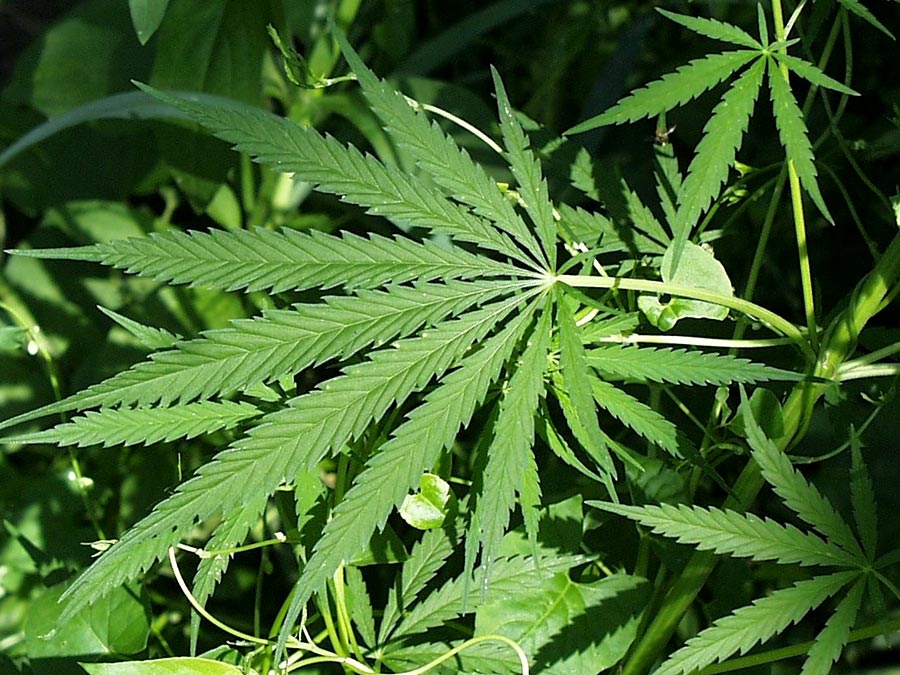
All You Need To Know About Cannabis
Cannabis, commonly known as marijuana, most people know some of the products as autoflowering seeds. They come in three different species: Cannabis sativa, Cannabis indica, and Cannabis ruderalis. The plant originated from Asia, but it now grows worldwide.
-
Cannabis sativa
It is the most common strain of cannabis; therefore, it is often referred to as just “cannabis.” While Cannabis indica was believed to produce a sedative effect, Cannabis sativa was thought to have more energetic and uplifting properties. However, recent studies have shown no significant differences between the two in terms of chemical composition.
Cannabis contains over 480 different chemical compounds, 66 of which are psychoactive. The main chemicals that create this effect are THC (delta-9 tetrahydrocannabinol) and CBD (cannabidiol).
While these chemical compounds interact with the brain’s endocannabinoid system, their effects on the body differ. THC can affect motor coordination, sensory perception, concentration, and memory. On the other hand, CBD is believed to provide therapeutic effects without any psychoactive effects. For example, CBD is known for treating seizures and inflammation.
While Cannabis sativa contains more THC than CBD, Cannabis indica has a higher percentage of CBD on average. According to an article published in the British Journal of Clinical Pharmacology, Cannabis sativa strains contain a higher concentration of THC and lower levels of CBD. Another study revealed that most strains with high levels of CBD (more than 4%) come from Cannabis indica plants.
-
Cannabis Indica
Cannabis indica is used to produce hashish, a type of drug made from the plant’s resin. Many people are growing Cannabis indica plants due to the increased prevalence of high-quality Indica buds.
However, there are many differences between Cannabis sativa and Cannabis indica that distinguish their effects on the body. For example, indica strains are soothing and relaxing, while Sativa strains will energize and uplift the user’s mood. Cannabis indica is also believed to improve sleep, whereas Cannabis sativa has been known to cause insomnia.
-
Cannabis ruderalis
Cannabis ruderalis is a subspecies of Cannabis sativa that contains very minute amounts of THC.
The Effects
THC is the chemical compound in cannabis that causes a euphoric “high.” This effect often makes users feel sleepy, drowsy, and hungry. It may also produce short-term memory loss, anxiety, depression, nausea, vomiting, pain, inflammation, increased heart rate, and decreased blood pressure.
On the other hand, CBD is said to provide therapeutic effects without any psychoactive effects. While research surrounding this cannabinoid has been limited due to its lack of psychoactive effect, some studies have shown that it can reduce pain and inflammation and lower anxiety.
Over time, chronic pain can have a significant impact on a person’s physical and mental health. Cannabis sativa has been used to relieve the symptoms of chronic diseases such as Parkinson’s disease, Alzheimer’s disease, multiple sclerosis (MS), cystic fibrosis, arthritis, cancer, HIV/AIDS, and epilepsy.
Medical Conditions
Cannabis has been widely used to treat many medical conditions. For example, multiple studies have shown that it can effectively reduce pain and inflammation, calm muscle spasms, relieve nausea associated with chemotherapy, improve appetite in HIV/AIDS patients or Alzheimer’s patients, and provide skin protection for psoriasis.
While research is still limited, there is evidence to support the use of Cannabis sativa for its medicinal effects.
The Legality
While several states in America have legalized medical marijuana, all you need is to procure from a company like i49. Cannabis federally remains illegal due to its unregulated status as a Schedule 1 drug by the Controlled Substances Act. As of 2018, only three countries- Uruguay, Canada, and the Netherlands- allow the sale and use of recreational cannabis nationwide.
In the United States, Cannabis sativa is a schedule I drug at the federal level. However, individual states have been legalizing its medical use since 1996, with California being the first. In 2016, 29 states allowed its medical use while eight others had legalized it for recreational use.
In Canada, Cannabis sativa was legalized for medical and recreational use in 2018. In the Netherlands, it has been legal to sell and consume cannabis in coffee shops or smart shops since 1976.
Humans have used it for thousands of years for its psychoactive effects – more commonly known as the high – as a form of medication or recreational use.
However, there is still limited scientific evidence to support Cannabis sativa due to its unregulated status and long history of human use. The scientific community has been divided over its use in therapy due to its psychoactive effects, especially on young children with developing brains.
The benefits of Cannabis sativa can be seen in its use as a treatment for medical conditions, but the long-term effects of this plant still need to be studied further.
Some of the benefits include:
1. Relief from Chronic Pain
2. Improvement of Symptoms Associated with Chronic Diseases such as Parkinson’s Disease, Alzheimer’s disease, and Multiple Sclerosis
3. Prevention and Reduction of Nausea and Vomiting
4. Stimulates Appetite and Improves Eating Behaviors in AIDS patients and Cancer Patients
5. Decrease Depression and Anxiety Attacks by Reducing Stress and Anxiety
6. Treatment of Glaucoma
7. Promotes Cardiovascular Health by Regulating Blood Pressure Levels and Decreasing Heart Rate
8. Reduces Risk of Type 2 Diabetes Mellitus
9. Treatment of Acne Vulgaris
10. Acts as a Sleep Aid (in some cases)
11. Relief from Chronic Pain
Cannabis sativa has been used to treat chronic pain and inflammation in traditional medicine systems such as Chinese, Indian, and Tibetan since the beginning of the twentieth century.
It was not until 1964 that the analgesic and anti-inflammatory effects of this plant were scientifically studied. The study showed that cannabis reduced the pain response in rats who had arthritis or chronic pain.
Inflammation may be one of the first responses of the immune system to insult or injury. However, chronic inflammation can lead to autoimmune disorders and even cancer. There is evidence for medical cannabis to treat neuropathic pain, which is more difficult to find treatment options.
In conclusion, when looking for cannabis-based medicines to treat chronic pain, it is best to choose preparations that contain both cannabinoids and terpenes. It allows the medicine to target multiple areas of chronic pain instead of just one. It can also be very beneficial for people who have continued muscle pain after an injury or those with nerve-related musculoskeletal problems.





More Stories
Is Vaseline an Indian Company? True or Not
Hrms Login Medicover – Tips and General Step to login
wheonx health: Latest Health News Portal